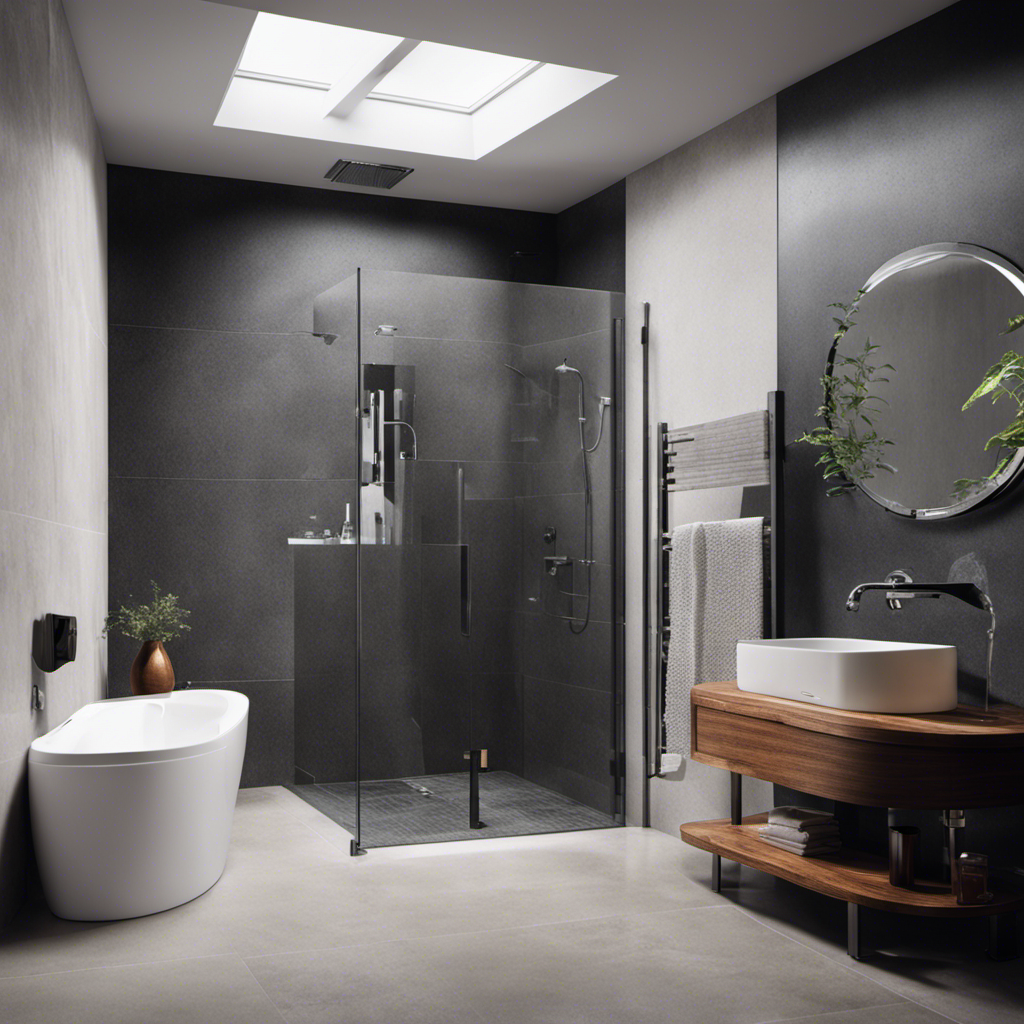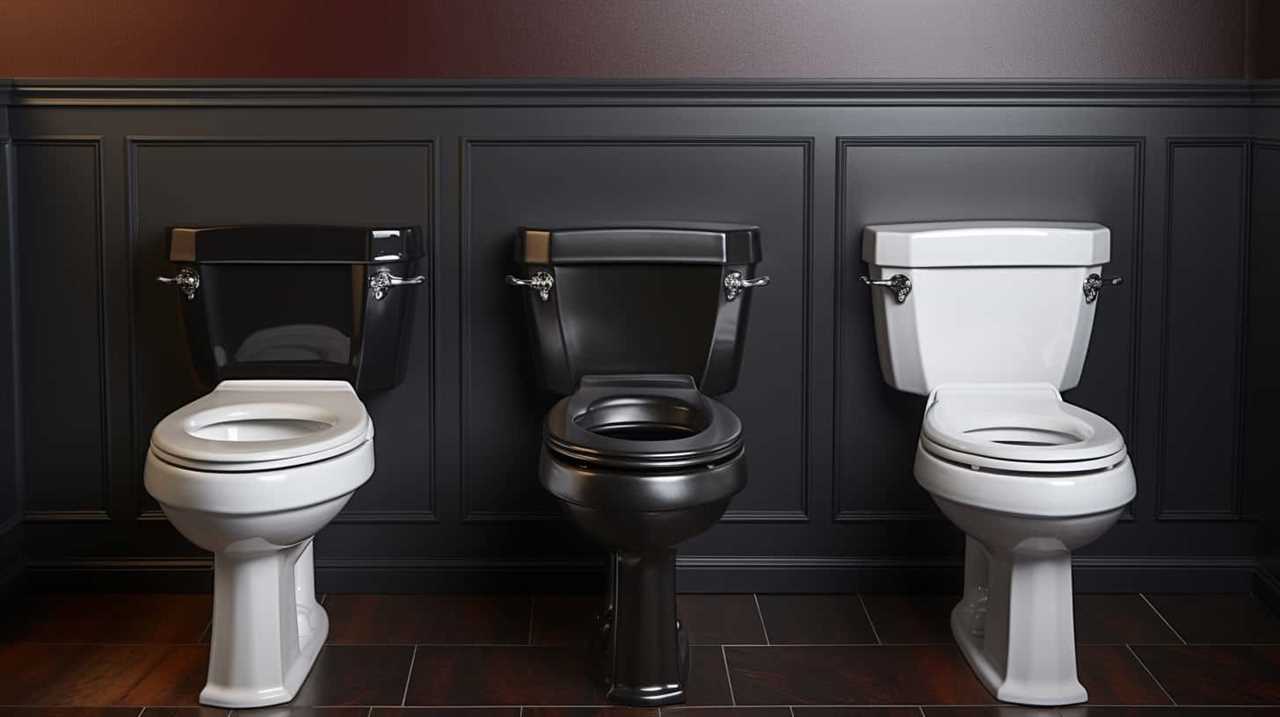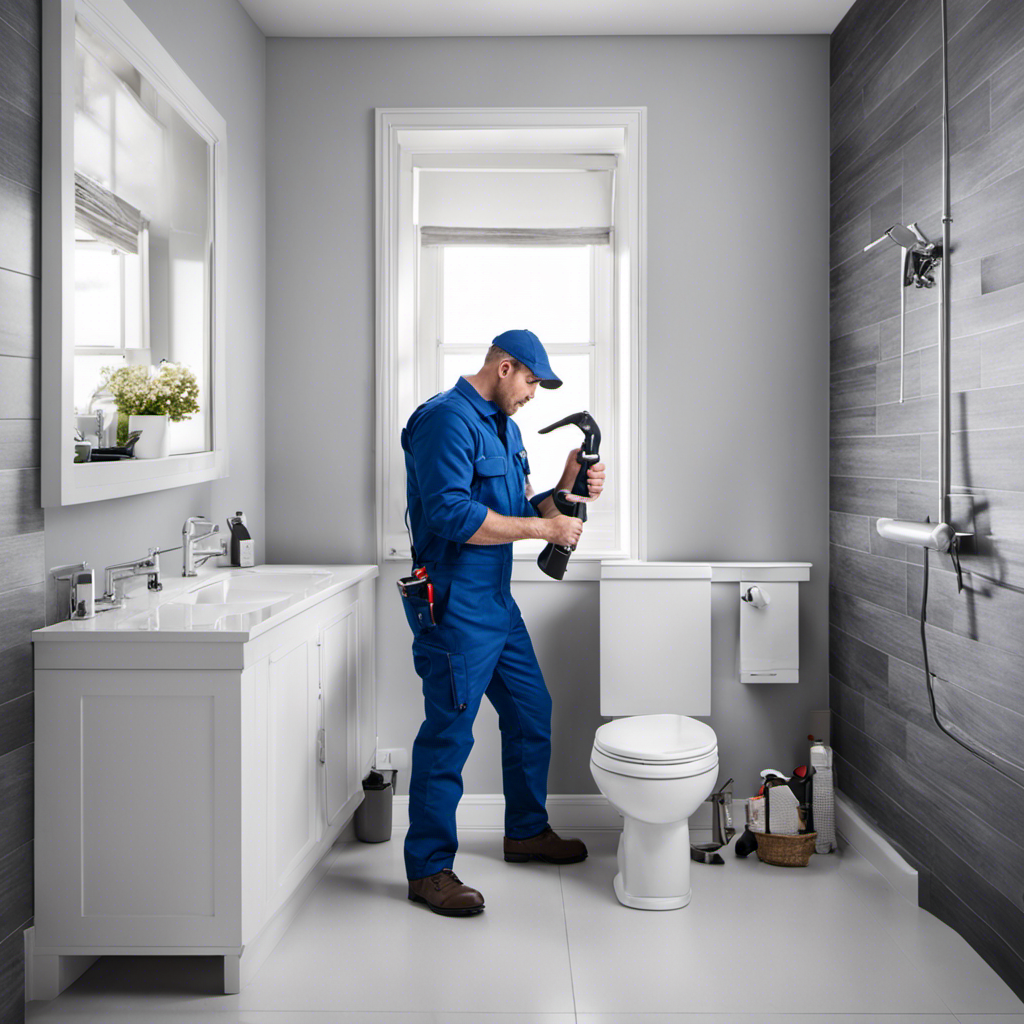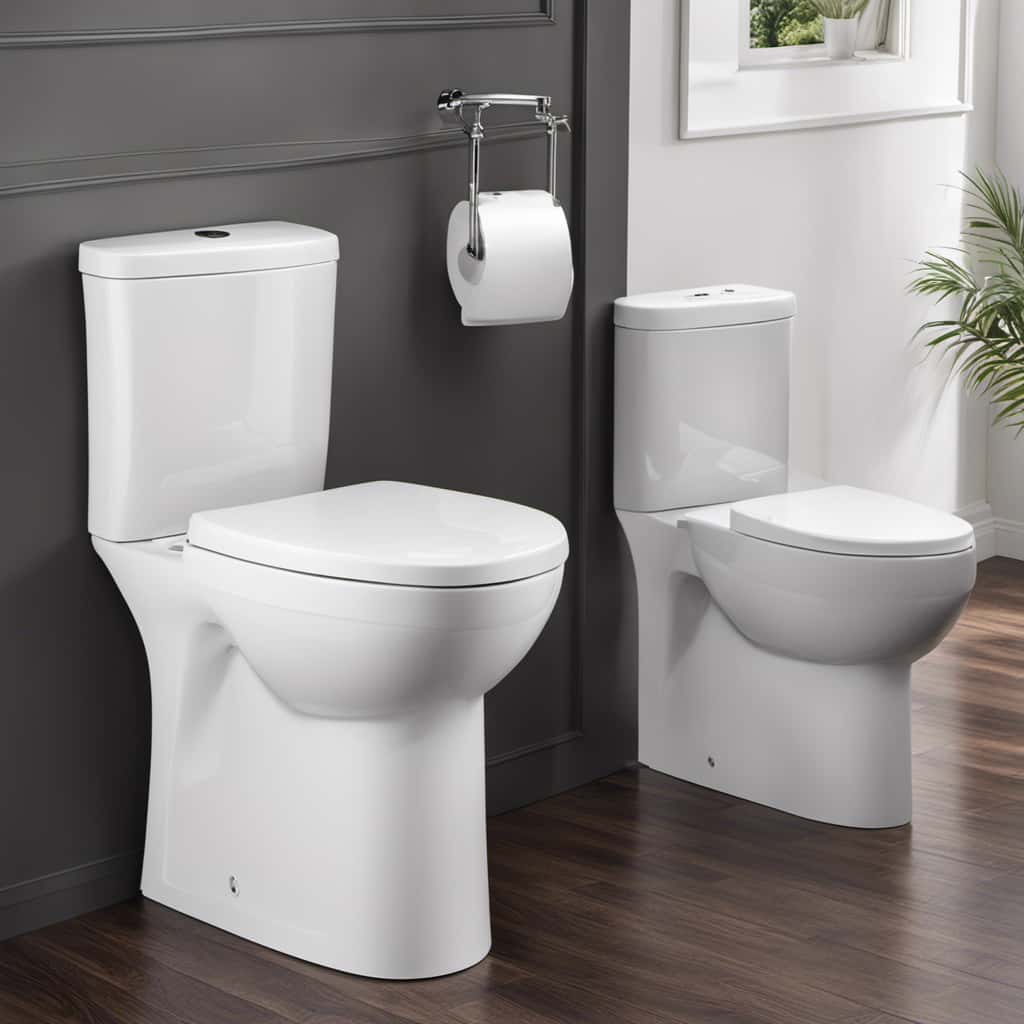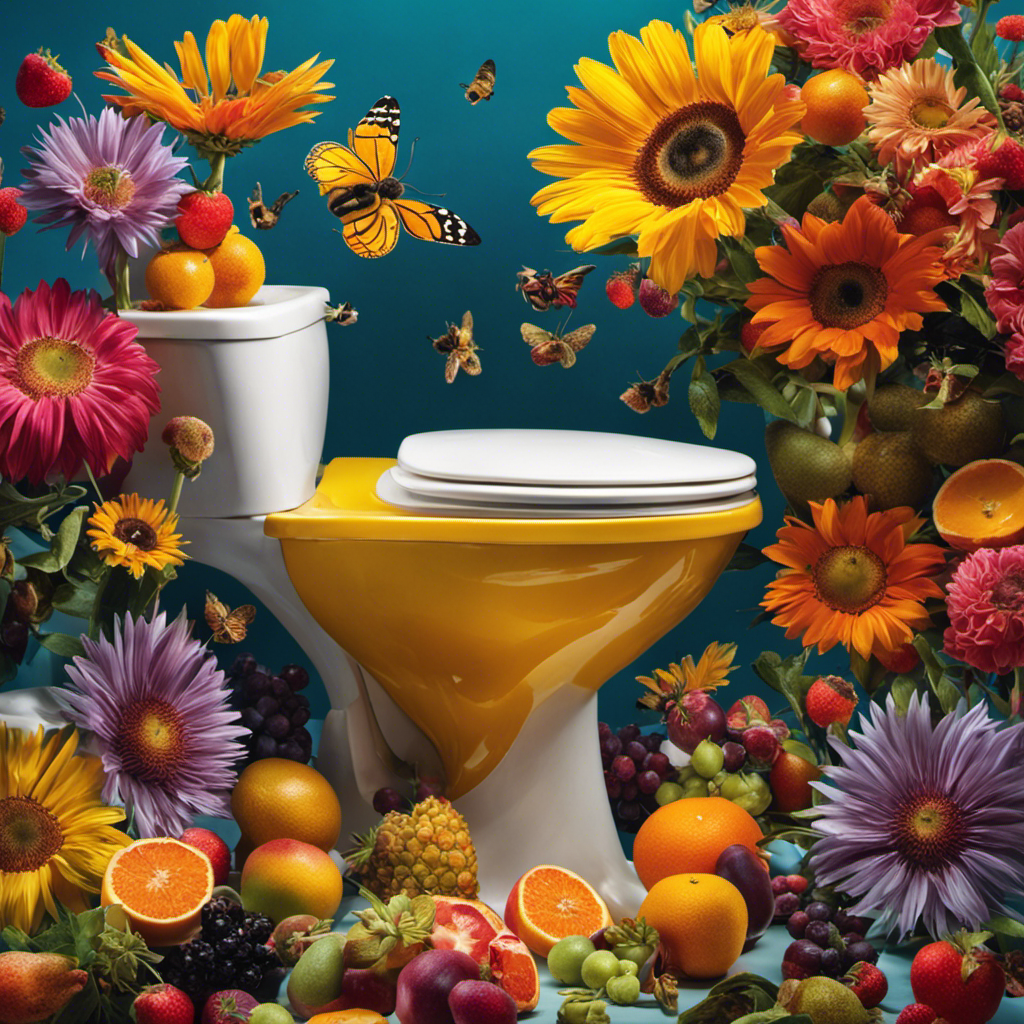Did you know that every time you flush the toilet while showering, you could be impacting your water pressure? It’s true! In this article, I will explore the potential consequences of this seemingly innocuous act.
We’ll delve into the risks of cross-contamination, the changes in water temperature, and the effects on the drainage system. Additionally, we’ll discuss the energy efficiency considerations that come into play.
So, let’s dive in and uncover the hidden consequences of flushing the toilet while showering.
Key Takeaways
- Flushing the toilet while showering decreases water pressure, leading to a weaker shower experience.
- Flushing the toilet while showering can lead to cross-contamination, as aerosolized droplets carrying bacteria are released.
- Flushing the toilet can cause unexpected fluctuations in water temperature, making the showering experience less enjoyable.
- Flushing the toilet while showering can overwhelm the drainage system, potentially leading to slow drainage or blockage.
The Impact on Water Pressure
When you flush the toilet while showering, it can significantly decrease your water pressure. This happens because both the toilet and the shower rely on the same water supply line.
When the toilet is flushed, it demands a large amount of water to flush away waste. This sudden demand for water can cause a drop in water pressure throughout the plumbing system.
As a result, the water flow to the showerhead decreases, leading to a weaker and less satisfying shower experience.
To avoid this issue, it is important to ensure proper plumbing maintenance. Regularly checking for any leaks or blockages in the plumbing system can help maintain optimal water flow and prevent a decrease in water pressure when using multiple fixtures simultaneously.
Potential Cross-Contamination Risks
There’s a risk of potential cross-contamination if the toilet is flushed while you’re taking a shower. This can lead to the spread of bacteria and pose health hazards. When you flush the toilet, a powerful surge of water is released into the bowl, creating aerosolized droplets that can carry bacteria. These droplets can then be propelled into the air and potentially land on your body or in your mouth while you’re showering. To illustrate the potential risks, here is a table showcasing some common bacteria found in toilets and the health hazards they can pose:
| Bacteria | Health Hazards |
|---|---|
| E. coli | Gastroenteritis, urinary tract infections |
| Salmonella | Diarrhea, fever, abdominal cramps |
| Staphylococcus aureus | Skin infections, respiratory infections |
| Streptococcus | Strep throat, skin infections |
| Pseudomonas aeruginosa | Urinary tract infections, pneumonia |
To minimize the risk of cross-contamination, it is advisable to close the lid before flushing and ensure proper ventilation in the bathroom to reduce the concentration of airborne bacteria.
Changes in Water Temperature
The temperature of the water can fluctuate unexpectedly and cause discomfort during a shower. When the water flow is interrupted, such as when someone flushes the toilet, it can lead to a sudden change in water temperature. This happens because the water pressure in the pipes is affected, causing a shift in the balance between hot and cold water.
As a result, you may experience a sudden blast of cold water or, in some cases, scalding hot water. This can be not only uncomfortable but also potentially dangerous, especially if you are not prepared for it. These fluctuations in water temperature can be a nuisance and make your showering experience less enjoyable.
However, the impact of flushing the toilet while showering does not stop at temperature changes. It also has an effect on the drainage system, which we will explore in the next section.
Effect on Drainage System
As a result of flushing, the drainage system can become overwhelmed and lead to clogs in the pipes. When you flush the toilet while showering, the sudden rush of water can disrupt the normal flow in the plumbing system. The increased volume of water entering the drains can cause a temporary backup, resulting in slow drainage or even complete blockage.
To avoid such issues, regular plumbing maintenance is essential. This includes keeping the drains clean and clear of debris, as well as ensuring proper pipe ventilation. It is also important to be mindful of the water flow disruption caused by flushing while showering, and to avoid doing so if possible.
By taking these measures, you can prevent potential clogs and maintain a well-functioning drainage system.
Now, let’s transition into the next section about energy efficiency considerations.
Energy Efficiency Considerations
When it comes to energy efficiency considerations, it’s important to evaluate the usage of appliances and lighting fixtures in your home. Finding cost-effective solutions that minimize energy consumption can have positive environmental implications.
One way to achieve this is by using energy-efficient appliances that are designed to reduce power usage while still providing the necessary functionality. These appliances often come with energy-saving features such as automatic shut-off timers or low-power modes.
Additionally, replacing traditional incandescent light bulbs with energy-efficient LED bulbs can significantly reduce energy consumption in your home. LED bulbs use less electricity and last longer, making them a cost-effective and environmentally friendly choice.
Conclusion
In conclusion, when you flush the toilet while showering, it’s like a clash of elements in a battle for dominance.
The water pressure takes a hit, causing a weak stream of water to cascade down your body, as if it’s struggling to maintain its power.
The risk of cross-contamination looms, like invisible enemies lurking in the shadows, ready to attack.
As the drainage system fights to cope with this dual assault, the water temperature fluctuates, leaving you in a state of discomfort.
In terms of energy efficiency, this clash drains resources, leaving a wasteful aftermath.
